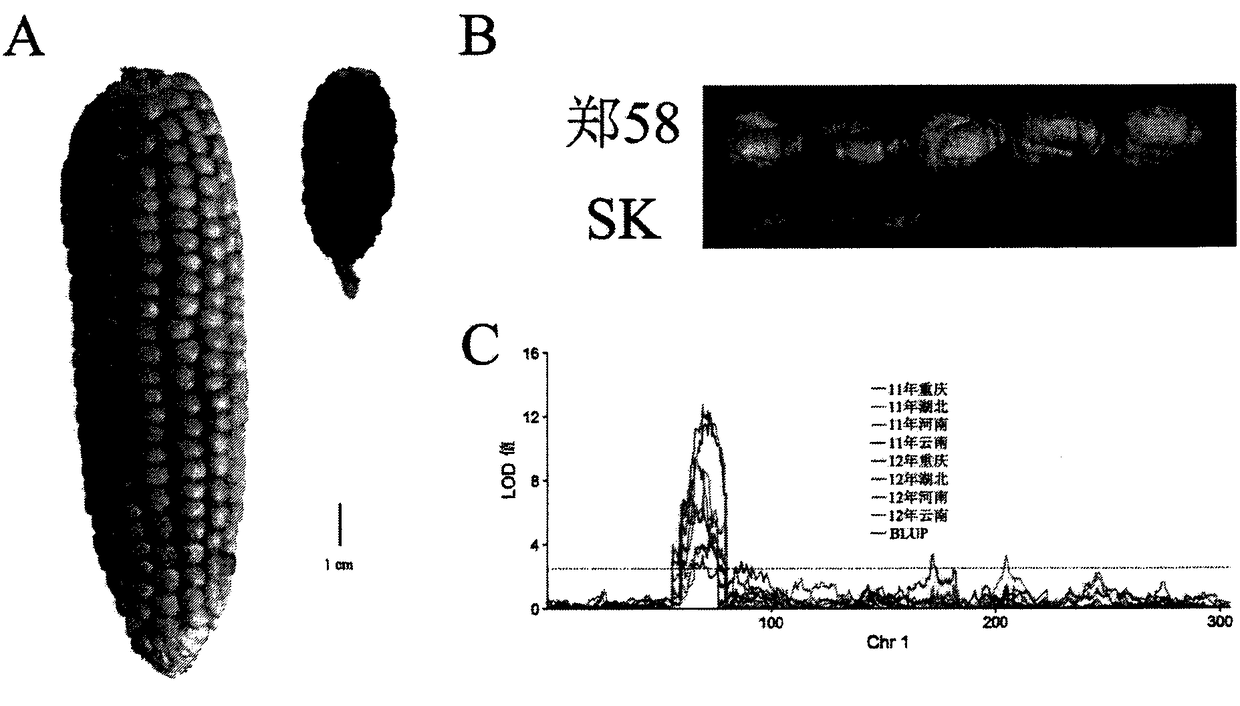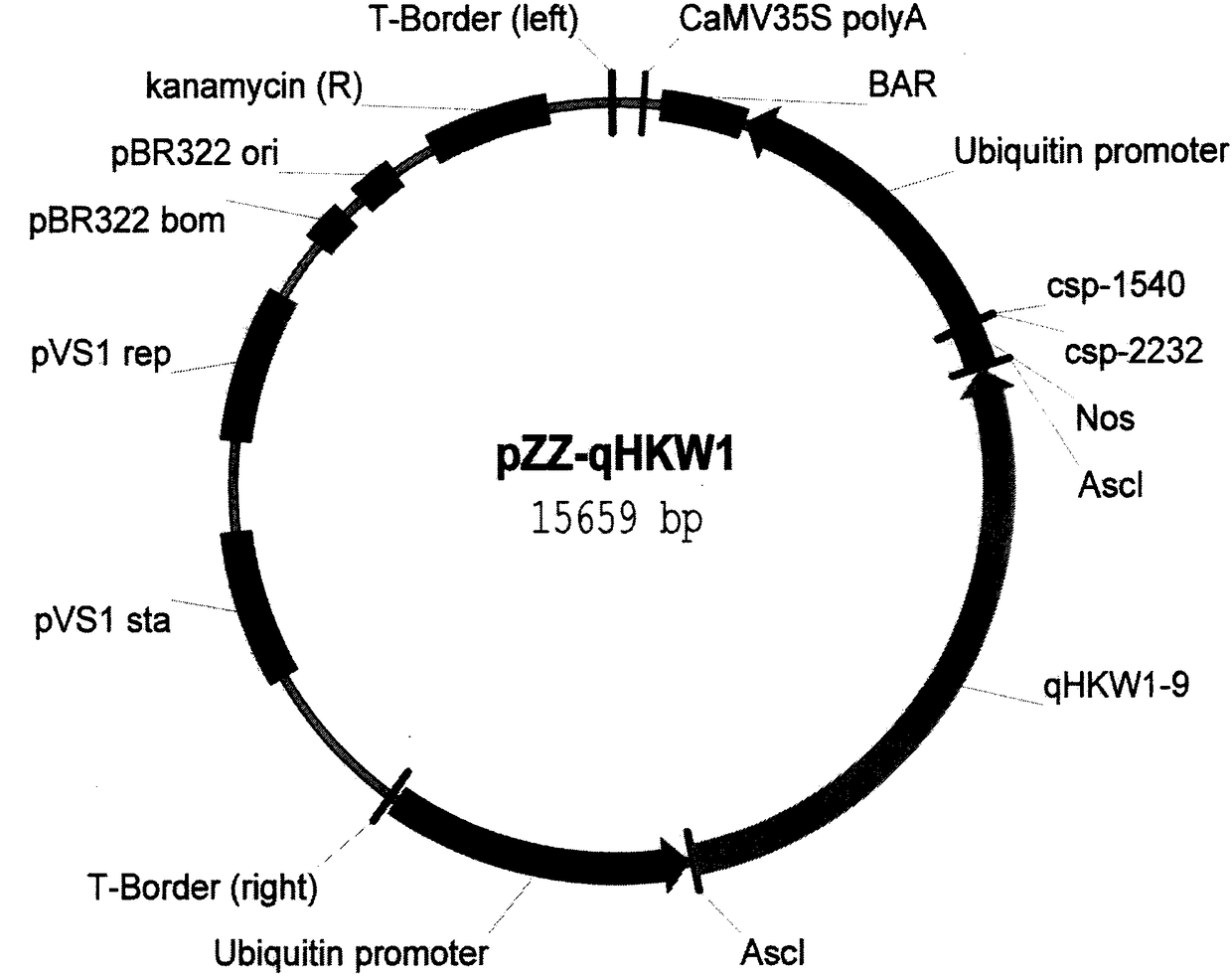Protein capable of controlling weight of crop seeds and application thereof
A protein and crop technology, applied in the field of plant genetics and breeding, can solve problems such as difficulty, small contribution rate of grain weight, and difficulty in fine positioning
- Summary
- Abstract
- Description
- Claims
- Application Information
AI Technical Summary
Problems solved by technology
Method used
Image
Examples
Embodiment 1
[0044] Example 1 Mapping of maize qHKW1-9 gene
[0045] Zheng 58 and SK are two middle inbred lines in maize. Zheng 58 has large ears, many grains, large and heavy grains, and high yield, while SK has small ears, few grains, small and light grains, and low yield ( figure 1 A, B). Therefore, by constructing the recombinant inbred line (RIL) population of Zheng 58×SK, the traits of maize kernels were initially mapped, and it was found that there is a major QTL on the short arm of chromosome 1 that can affect the grain weight of the grain (grain weight as 100-kernel weight trait index measurement)( figure 1 C), name this QTL qHKW1. According to the results of multi-point location for many years, this QTL can be detected in 7 environmental points affecting 100-grain weight ( figure 1 C), the candidate interval of this QTL is 65-77cM, and the length of the corresponding physical location interval is 16Mb. At different environmental points, the maximum LOD (limit of detection) v...
Embodiment 2
[0053] Example 2 qHKW1-9 protein function and its identity protein
[0054] Analysis of the protein sequence encoded by the qHKW1-9 gene revealed that the gene encodes a total of 1 amino acid (sequence shown in SEQ ID NO.1), which belongs to leucine-rich repeat receptor-like serine / threonine-protein kinase protein. Further use of the BLASTP tool in the NCBI database (https: / / www.ncbi.nlm.nih.gov / ) found that the qHKW1-9 protein has identity proteins in other plants, and the sequence similarity between these proteins and the qHKW1-9 protein Extremely high and all belong to leucine-rich repeat receptor-like serine / threonine-protein kinase type proteins. These proteins come from sorghum, millet, millet, japonica rice, indica rice, wild rice with short anthers, barley, barley, Brachypodium distachys and other plants, and their amino acid sequence similarity with qHKW1-9 protein is at least 81%, 82% %, 83%, 84%, 85%, 89% or 92% (Table 2), the amino acid sequence is shown in SEQ ID...
PUM
 Login to View More
Login to View More Abstract
Description
Claims
Application Information
 Login to View More
Login to View More - R&D
- Intellectual Property
- Life Sciences
- Materials
- Tech Scout
- Unparalleled Data Quality
- Higher Quality Content
- 60% Fewer Hallucinations
Browse by: Latest US Patents, China's latest patents, Technical Efficacy Thesaurus, Application Domain, Technology Topic, Popular Technical Reports.
© 2025 PatSnap. All rights reserved.Legal|Privacy policy|Modern Slavery Act Transparency Statement|Sitemap|About US| Contact US: help@patsnap.com



